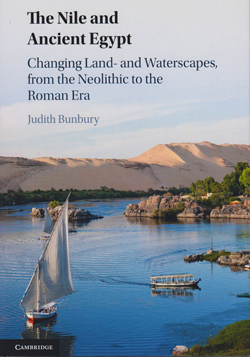
The story of the Nile and its influence on the people of Ancient Egypt is an intriguing one. This book is a chronological narrative, divided by geographic region, bringing together evidence of environmental change and historical events that occurred throughout Ancient Egypt.
The text successfully portrays how archaeological evidence provides just one aspect for the description of how people lived their lives. Often, history took place in completely different environments to those we witness now. It is the environmental context drawn from geology that enables us to really understand the evidence used to construct our historical understanding of civilization. With that in mind, it was unfortunate to learn how early Egyptologists (until the late 19th Century) disregarded geological context, preferring to focus purely on the interpretation of hieroglyphics, and missing out on context for recovered ancient texts.
The book outlines the people and environments of Ancient Egypt. In summary, a wetter landscape existed until the time period known as the Old Kingdom. What we now know as the Sahara Desert contained marshes, large lakes, and abundant plant and animal life. The text discusses some of the evidence for this, including rock art and stone tools in the Kharga Oasis, amongst other places. Due to environmental pressures, including desertification, communities began (around 3,100BC) to move into the Nile Valley.
The migration cumulates in the chapter on Egypt’s capitals, a chapter that is particularly notable because it lays the ground for a climate crisis that led to the fall of the Old Kingdom. Long-term climate stresses pushed populations into the valley, resulting in the decentralization of political power, combined with an abrupt climate event—a massive influx of sand, postulated to have been laid down quickly into the valley—that instigated the collapse of the Old Kingdom. Later, Thebes rose in the south as the capital of the New Kingdom.
The book continues with the history of Nile Valley civilization, describing how during the New Kingdom the inhabitants learned a degree of control over the river. This control created some of the most elaborate river-management schemes in the ancient world. These schemes came into their own in the Roman Period and continued to be used through Coptic, Islamic and into Modern time.
This is an interesting read, recommended particularly for those looking for the geological context for Nile Valley civilizations and how the valley could be altered by future climate change.
Reviewed by Simon Kettle
THE NILE AND ANCIENT EGYPT: CHANGING LAND- AND WATERSCAPES, FROM THE NEOLITHIC TO THE ROMAN ERA, by Judith Bunbury 2019. Published by: Cambridge University Press, 182 pp. (hbk.) ISBN: 9780511997884
List Price: £75.00
W: www.cambridge.org;
https://doi.org/10.1017/9780511997884